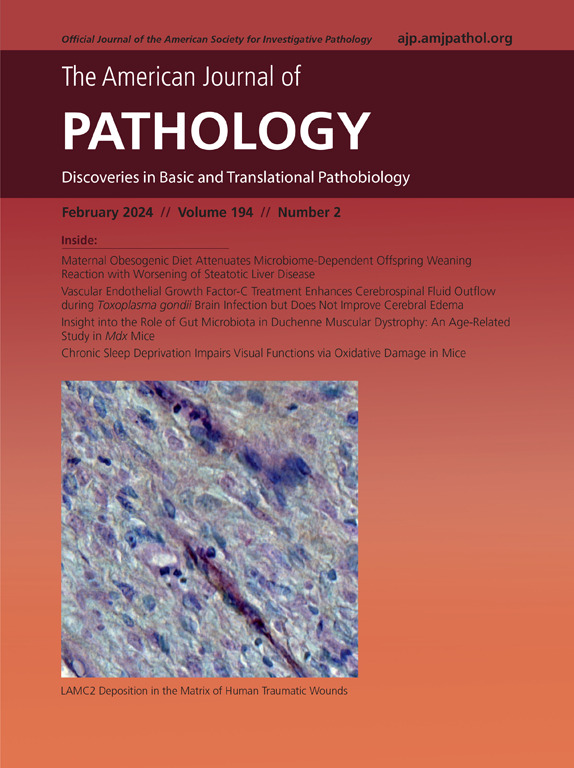胆管癌和肝细胞-胆管癌联合瘤起源细胞的形态分子病理学和基因组学见解。
IF 4.7
2区 医学
Q1 PATHOLOGY
引用次数: 0
摘要
胆管癌是一类高度异质性的恶性肿瘤,尽管近年来对其分子发病机制和临床治疗的认识取得了进展,但它仍对公共卫生构成重大挑战。传统观点认为,胆管癌源于胆管内胆管细胞的肿瘤性转化。然而,最近越来越多的遗传和实验证据表明,胆管癌的潜在起源细胞有可能更加复杂和微妙,肝细胞和肝干细胞/祖细胞被认为是额外的潜在来源,这取决于包括肝损伤在内的微环境背景。鉴于肝脏中细胞的可塑性以及具有混合组织学和分子特征的肝癌亚型的存在,CCA潜在来源细胞多样化的假说尽管存在争议,但肯定不足为奇。本综述仔细研究了目前支持肝癌和胆道癌存在多种起源细胞的病理学、基因组学和实验证据,尤其关注胆管癌和肝细胞-胆管癌合并症。本文章由计算机程序翻译,如有差异,请以英文原文为准。
Morphomolecular Pathology and Genomic Insights into the Cells of Origin of Cholangiocarcinoma and Combined Hepatocellular-Cholangiocarcinoma
Cholangiocarcinomas are a highly heterogeneous group of malignancies that, despite recent progress in the understanding of their molecular pathogenesis and clinical management, continue to pose a major challenge to public health. The traditional view posits that cholangiocarcinomas derive from the neoplastic transformation of cholangiocytes lining the biliary tree. However, increasing genetic and experimental evidence has recently pointed to a more complex, and nuanced, scenario for the potential cell of origin of cholangiocarcinomas. Hepatocytes as well as hepatic stem/progenitor cells are being considered as additional potential sources, depending on microenvironmental contexts, including liver injury. The hypothesis of potentially diverse cells of origin for cholangiocarcinoma, albeit controversial, is certainly not surprising given the plasticity of the cells populating the liver as well as the existence of liver cancer subtypes with mixed histologic and molecular features. This review carefully examines the current pathologic, genomic, and experimental evidence supporting the existence of multiple cells of origin of liver and biliary tract cancers, with particular focus on cholangiocarcinoma and combined hepatocellular-cholangiocarcinoma.
求助全文
通过发布文献求助,成功后即可免费获取论文全文。
去求助
来源期刊
CiteScore
11.40
自引率
0.00%
发文量
178
审稿时长
30 days
期刊介绍:
The American Journal of Pathology, official journal of the American Society for Investigative Pathology, published by Elsevier, Inc., seeks high-quality original research reports, reviews, and commentaries related to the molecular and cellular basis of disease. The editors will consider basic, translational, and clinical investigations that directly address mechanisms of pathogenesis or provide a foundation for future mechanistic inquiries. Examples of such foundational investigations include data mining, identification of biomarkers, molecular pathology, and discovery research. Foundational studies that incorporate deep learning and artificial intelligence are also welcome. High priority is given to studies of human disease and relevant experimental models using molecular, cellular, and organismal approaches.

 求助内容:
求助内容: 应助结果提醒方式:
应助结果提醒方式:


